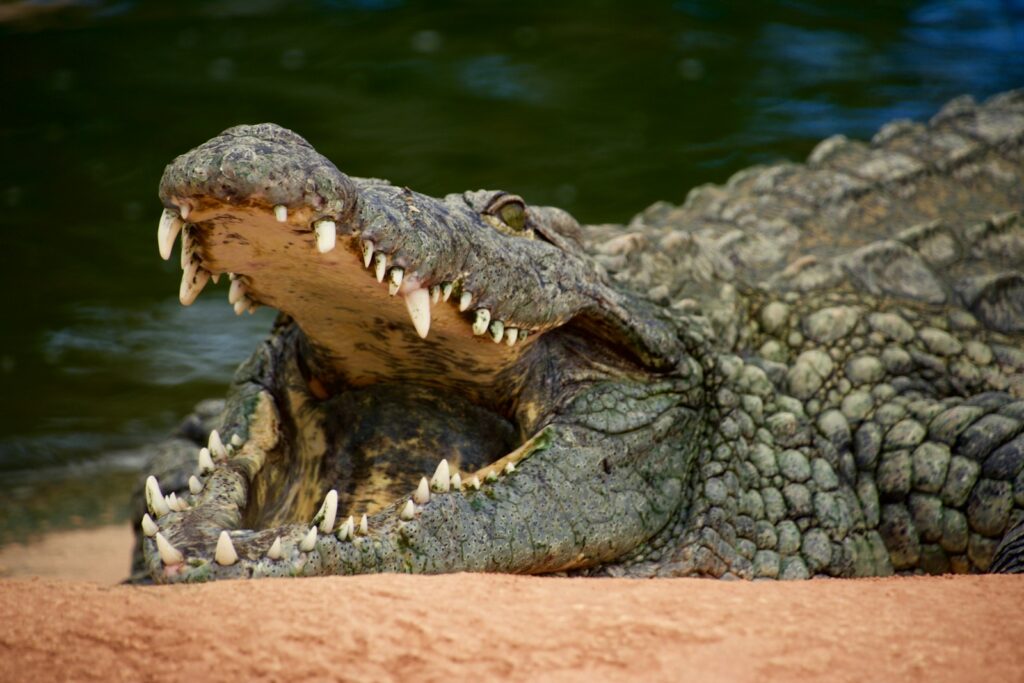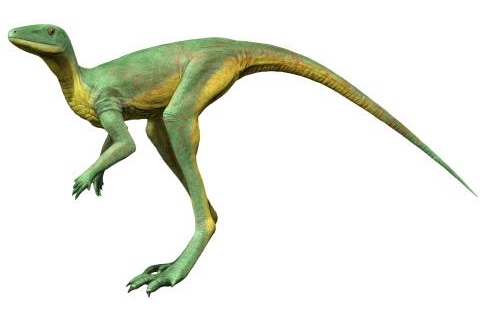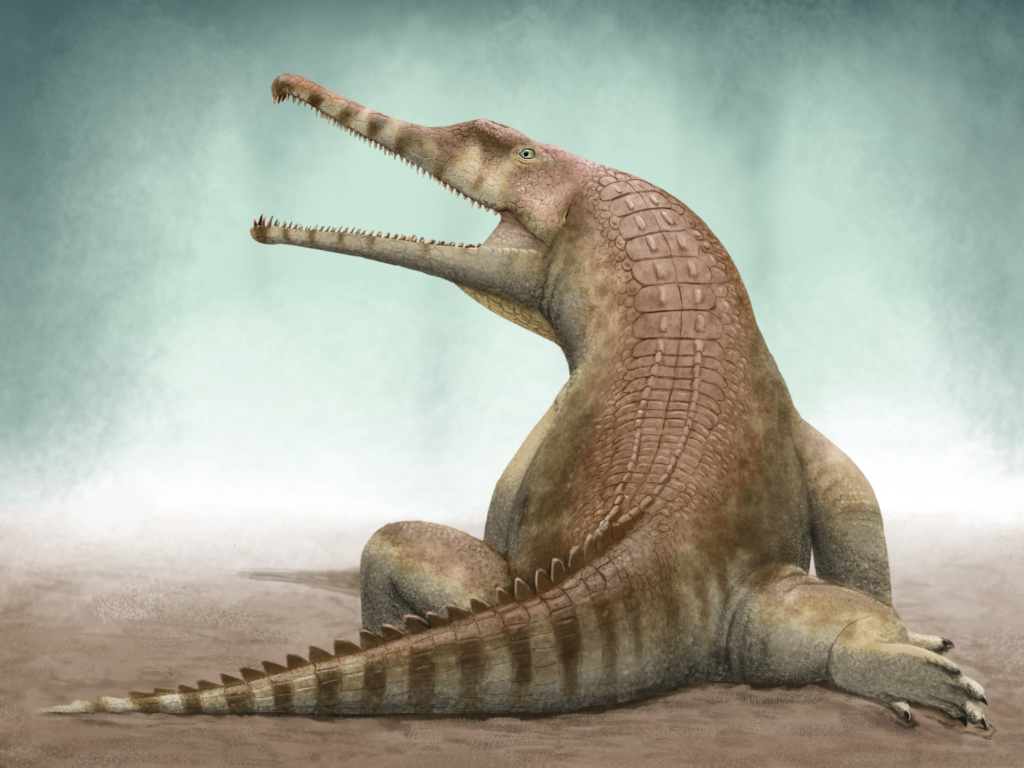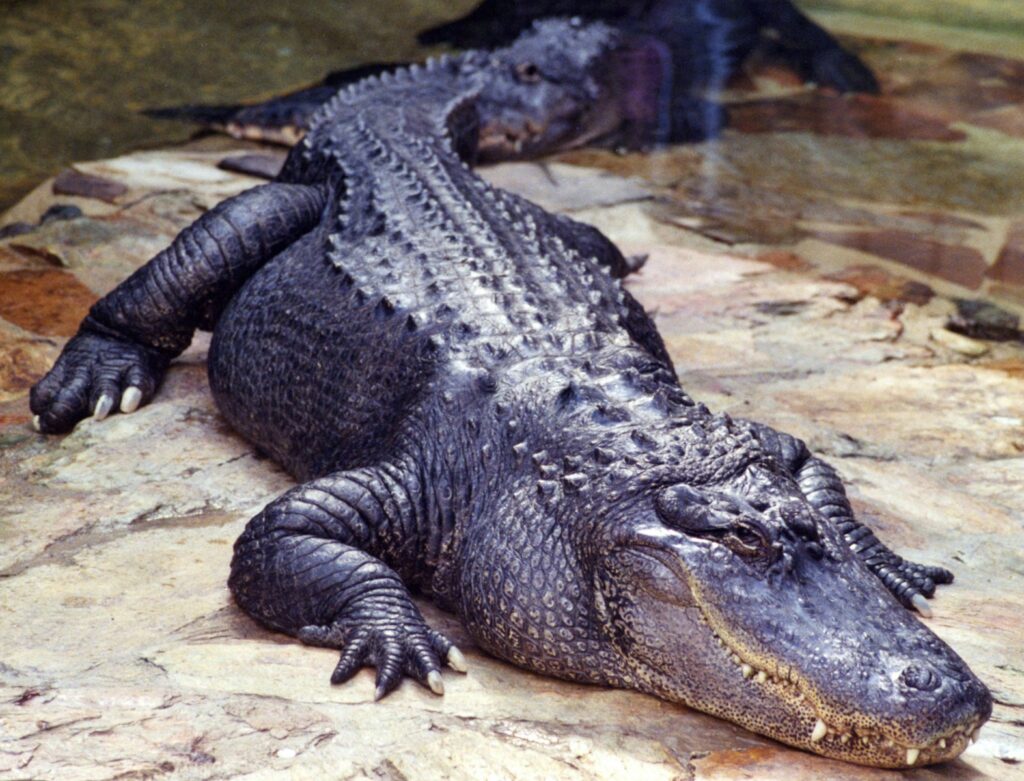The evolutionary journey that led to dinosaurs dominating the Mesozoic Era represents one of the most fascinating chapters in the history of life on Earth. Around 250 million years ago, a critical evolutionary split occurred among archosaurs—the “ruling reptiles”—that would forever alter the course of terrestrial vertebrate evolution. On one branch, the lineage leading to crocodilians; on the other, the precursors of dinosaurs and eventually birds. This divergence set the stage for the rise of some of the most remarkable creatures ever to walk the planet. The story of how dinosaur ancestors separated from their crocodilian cousins involves dramatic anatomical innovations, shifting ecological pressures, and evolutionary experiments that would ultimately lead to the diverse array of dinosaurs that captivated our imagination. This article explores this pivotal evolutionary transition that reshaped life on land and continues to influence our understanding of evolution today.
The Common Archosaur Ancestor

Both dinosaurs and crocodilians descended from a common group of reptiles known as archosaurs, which emerged during the late Permian and early Triassic periods roughly 250 million years ago. These early archosaurs possessed several distinctive characteristics, including antorbital fenestrae (openings in the skull in front of the eyes), serrated teeth, and specialized ankle joints. Their rise coincided with the aftermath of the devastating Permian-Triassic extinction event, which eliminated approximately 70% of terrestrial vertebrate species and created ecological opportunities for surviving lineages. Within this ancestral archosaur population lay the genetic potential for two dramatically different evolutionary trajectories. The early archosaurs were likely small to medium-sized predators that occupied mid-level positions in their ecosystems, neither dominant nor insignificant. This common ancestry explains why, despite their obvious differences, crocodilians and birds (the living descendants of dinosaurs) share certain fundamental traits in their reproductive biology, cardiovascular systems, and skeletal structures.
The Great Archosaur Split

The archosaur lineage divided into two major branches: the pseudosuchians (leading to crocodilians) and the avemetatarsalians (leading to pterosaurs, dinosaurs, and birds). This divergence, occurring in the Early to Middle Triassic period approximately 245 million years ago, represents one of the most consequential evolutionary events in vertebrate history. Fossil evidence for this split comes from sites across Pangaea, the supercontinent that existed during this period. The earliest members of both lineages retained many similarities, making precise identification of transitional fossils challenging for paleontologists. Nevertheless, subtle differences in hip structure, ankle configuration, and limb proportions began to appear, foreshadowing the more dramatic differences that would evolve later. This division set the stage for fundamentally different body plans and ecological adaptations that would characterize each lineage. Interestingly, for millions of years after their divergence, pseudosuchians dominated terrestrial ecosystems, with the dinosaurian lineage remaining relatively minor until the Late Triassic.
Anatomical Differences in the Pelvis

One of the most telling anatomical differences that distinguished early dinosaur ancestors from the crocodile lineage was the structure of the pelvis. The pseudosuchian (crocodile-line) archosaurs retained a more primitive hip configuration similar to most reptiles. In contrast, dinosaur predecessors developed either a “bird-like” hip structure (in ornithischians) or a modified arrangement (in saurischians) that supported a more upright posture. This pelvic reconfiguration occurred gradually through transitional forms like Asilisaurus and Silesaurus, which weren’t quite dinosaurs but showed the beginning of dinosaur-like hip arrangements. The modified pelvis allowed for more efficient limb movement underneath the body rather than sprawling to the sides. This anatomical innovation proved crucial for the high-performance locomotion that would become a hallmark of the dinosaur lineage. Furthermore, changes in the pelvis coincided with modifications to the associated musculature, creating a more powerful and energy-efficient locomotor system. The evolutionary experimentation with pelvic structure ultimately resulted in two distinct dinosaur groups: the “bird-hipped” ornithischians and the “lizard-hipped” saurischians, though ironically, birds would eventually evolve from the latter group.
Evolution of Upright Stance

Perhaps the most visible difference that emerged between the two archosaur lineages involved their stance and gait. While the crocodile lineage largely maintained a sprawling or semi-erect posture with limbs extending somewhat outward from the body, the dinosaur lineage evolved a fully upright, parasagittal stance with limbs positioned directly beneath the body. This shift occurred gradually during the Middle to Late Triassic period, as evidenced by fossils like Marasuchus and Lagosuchus, which showed increasingly dinosaur-like postures. The upright stance required substantial modifications to the limb bones, joints, and associated musculature to support the body’s weight differently. This postural revolution provided several advantages, including more efficient energy use during locomotion, improved stamina, and potentially higher maximum running speeds. The transition to upright posture also coincided with changes in the respiratory and cardiovascular systems needed to support more active lifestyles. Intriguingly, this shift toward an upright stance represents one of evolution’s most successful experiments, having evolved independently in both dinosaurs and mammals, albeit through different anatomical modifications.
Changes in Ankle Structure

The ankle joint underwent significant remodeling during the divergence of dinosaur ancestors from the crocodilian lineage, creating one of the clearest anatomical markers of the split. Crocodile-line archosaurs evolved what paleontologists call a “crocodile-normal” ankle, with a rotary joint between the astragalus and calcaneum bones. In contrast, dinosaur-line archosaurs developed a “mesotarsal” ankle, where the joint runs between the proximal and distal ankle bones, a configuration still seen in birds today. This ankle reorganization in dinosaur ancestors allowed for more efficient forward motion while limiting side-to-side movement, reinforcing their increasingly upright stance. The mesotarsal ankle acted as a simple hinge, enabling the powerful propulsive movements needed for rapid locomotion. Transitional forms showing intermediate ankle structures appear in the fossil record, documenting this gradual transformation. The distinctive ankle morphology proves so reliable as an evolutionary marker that it often helps paleontologists determine which side of the archosaur divide a newly discovered fossil belongs to, even when other skeletal elements are ambiguous.
Respiratory System Innovations

The respiratory systems of the two archosaur lineages evolved along dramatically different paths, driven by their diverging activity levels and metabolic needs. While crocodilian ancestors retained a relatively simple lung structure similar to other reptiles, the dinosaur lineage developed a highly efficient air-sac system with unidirectional airflow, which modern birds still possess. This respiratory innovation likely began emerging in early dinosauriformes, as suggested by pneumatic features in fossil vertebrae. The evolution of this system provided dinosaur ancestors with superior oxygen absorption capacity, necessary to fuel their increasingly active lifestyles. Evidence for air sacs appears in the form of distinctive pneumatic fossae (depressions) and foramina (openings) in the vertebrae and ribs of early dinosauromorphs. This respiratory adaptation represents one of the most significant physiological innovations in vertebrate evolution, potentially enabling the high activity levels and elevated metabolic rates that would characterize many dinosaur groups. The development of this system likely occurred incrementally, with partial air sac systems preceding the fully developed avian-style respiratory complex that characterized later dinosaurs.
Early Dinosauromorphs: The Transitional Forms

Between the common archosaur ancestor and true dinosaurs existed a series of transitional forms collectively known as dinosauromorphs. These animals, including genera like Lagerpeton, Marasuchus, and Silesaurus, displayed an intriguing mixture of primitive archosaur characteristics and nascent dinosaur features. Dating from the Middle to Late Triassic (approximately 242-235 million years ago), these animals were generally small-bodied predators or omnivores occupying middle tiers in their ecosystems. Their fossil remains demonstrate the incremental acquisition of dinosaur traits: some had partially upright postures, moderately modified ankles, or slightly elongated legs, but lacked the full suite of dinosaurian characteristics. The silesaurids, for instance, possessed elongated legs and partially upright posture, but retained more primitive tooth structures and pelvic configurations than true dinosaurs. These transitional forms occupied diverse niches throughout Pangaea, from the southern regions (in modern South America) to northern territories. Through these intermediaries, we can trace how the distinctive dinosaur body plan emerged not in a single evolutionary leap but through a series of incremental adaptations over millions of years.
The Pseudosuchian Success Story

While dinosaurs eventually dominated terrestrial ecosystems, it’s crucial to understand that for millions of years after the archosaur split, it was the pseudosuchians (crocodile-line archosaurs) that were the more successful group. During the Middle and Late Triassic periods, pseudosuchians displayed remarkable diversity, evolving into forms such as phytosaurs (crocodile-like semi-aquatic predators), aetosaurs (armored herbivores), rauisuchians (large terrestrial predators), and ornithosuchids (bipedal, somewhat dinosaur-like forms). These groups occupied numerous ecological niches and were the dominant terrestrial predators in many Triassic ecosystems. The pseudosuchian body plan proved highly versatile, allowing adaptation to aquatic, semi-aquatic, and fully terrestrial lifestyles. Their success demonstrates that the crocodile lineage shouldn’t be viewed as “inferior” or less evolutionarily advanced, but rather as pursuing a different but equally viable evolutionary strategy. Only after the Triassic-Jurassic mass extinction event, which disproportionately affected pseudosuchians, did dinosaurs rise to ecological dominance. The crocodylomorphs (direct ancestors of modern crocodilians) represent the only pseudosuchian lineage to survive this extinction boundary in substantial numbers.
Dietary Adaptations and Divergence

The split between dinosaur and crocodilian ancestors was accompanied by notable differences in feeding adaptations that reflected their diverging ecological roles. Early crocodile-line archosaurs generally retained the ancestral archosaur pattern of conical, serrated teeth suited for carnivory, though some lineages, like aetosaur, evolved specialized dentition for herbivory. In contrast, the dinosaur lineage rapidly diversified its feeding adaptations, with some early forms showing modifications toward omnivory or herbivory. The ability to process plant material appears to have evolved multiple times within the dinosaur lineage, as evidenced by dental and jaw modifications in early dinosauriformes like silesaurids. Additionally, dinosauromorphs began developing distinctive changes to jaw musculature and tooth replacement patterns that differed from their pseudosuchian relatives. These dietary adaptations allowed proto-dinosaurs to exploit plant resources that were becoming more abundant as gymnosperms diversified across Pangaea during the Triassic. The capacity for dietary flexibility may have been one advantage that helped dinosaurs survive the Triassic-Jurassic extinction event, while many specialized pseudosuchian groups perished. These early dietary experiments laid the groundwork for the tremendous feeding diversity seen in later dinosaur groups.
Thermal Physiology and Metabolism

The divergence of dinosaur ancestors from the crocodilian lineage involved significant differences in metabolic strategies and thermal physiology. While pseudosuchians generally retained the ancestral ectothermic (“cold-blooded”) physiology common to most reptiles, evidence suggests that dinosaur predecessors may have begun developing elevated metabolic rates and some degree of endothermy (“warm-bloodedness”). Histological studies of bone microstructure in early dinosauromorphs reveal growth patterns suggesting higher metabolic rates than their crocodile-line contemporaries. The evolution of the specialized respiratory system in the dinosaur lineage would have provided the oxygen-processing capacity necessary to support more active lifestyles and potentially higher resting metabolic rates. Additionally, some early dinosauromorphs show evidence of insulating structures preserved as impressions around fossils, hinting at mechanisms for heat retention. The shift toward endothermy likely occurred gradually along the dinosauromorph lineage, with full endothermy potentially not emerging until later dinosaurs. This physiological divergence represents one of the most fundamental differences between the two archosaur lineages and has profound implications for their activity levels, geographic distributions, and ecological roles.
Environmental Context of the Divergence

The split and subsequent divergence between dinosaur and crocodilian ancestors occurred against a backdrop of significant environmental and climatic changes during the Triassic period. The early Triassic world was recovering from the devastating Permian-Triassic mass extinction, with ecosystems gradually rebuilding complexity and diversity. Global temperatures were generally warm, with pronounced seasonality and relatively arid conditions across much of Pangaea. These environmental conditions may have favored the more energy-efficient locomotion evolving in the dinosaur lineage, particularly in the interior regions of the supercontinent, where resources might have been more scattered. Climate fluctuations during the Middle and Late Triassic, including several episodes of warming and cooling, created selective pressures that tested the adaptability of both lineages. The Carnian Pluvial Episode—a period of increased rainfall around 230 million years ago—coincided with significant diversification in both archosaur lineages. Volcanic activity associated with the breakup of Pangaea altered atmospheric composition and regional climates, potentially contributing to the ecological pressures driving archosaur evolution. These environmental factors created a dynamic backdrop that influenced the trajectory of both lineages, with different adaptations proving advantageous in different regions and habitats.
Geographical Distribution of Early Forms

The earliest known dinosauromorphs and pseudosuchians show interesting patterns in their geographical distribution that provide clues about their evolutionary history. Fossils of early dinosauriforms are particularly abundant in South America (especially Argentina and Brazil) and Africa, suggesting that the southern regions of Pangaea may have been especially important in early dinosaur evolution. In contrast, pseudosuchians achieved widespread distribution across Pangaea relatively quickly, with significant diversity in both northern and southern regions. The oldest definitive dinosaur fossils come from South America and date to approximately 231-228 million years ago, including genera like Eoraptor and Herrerasaurus from Argentina. The slightly earlier silesaurids (close dinosaur relatives) have been found across more widespread locations, including Tanzania, Poland, and the southwestern United States. This distribution pattern suggests that climatic or ecological factors may have varied across Pangaea, creating different selective pressures in different regions. Some paleontologists propose that the southern regions of Pangaea may have experienced conditions particularly favorable for dinosauriform body plan and physiology. As Pangaea began fragmenting during the Late Triassic and Early Jurassic, the two lineages continued diverging with increased geographical isolation.
The Triassic-Jurassic Extinction and Aftermath

The end-Triassic mass extinction event, approximately 201 million years ago, fundamentally influenced the evolutionary trajectories of both archosaur lineages, with dramatically different outcomes. This extinction event, likely triggered by massive volcanic eruptions associated with the breakup of Pangaea, eliminated approximately 80% of species on Earth. Among archosaurs, pseudosuchians suffered catastrophic losses, with most major groups—including phytosaurs, aetosaurs, and rauisuchians—disappearing entirely. In stark contrast, dinosaurs not only survived but underwent a rapid adaptive radiation in the early Jurassic period. The crocodylomorph lineage (direct ancestors of modern crocodilians) represents the only pseudosuchian group to survive in significant numbers, and they did so partly by adopting semi-aquatic lifestyles. This extinction event effectively ended the competition between diverse pseudosuchians and early dinosaurs, clearing ecological space that dinosaurs quickly occupied. The differential survival rates between the two lineages suggest that dinosaurs possessed adaptations—possibly including higher metabolic rates, greater dietary flexibility, or more efficient locomotion—that proved advantageous during this crisis. The aftermath of the extinction thus cemented the divergent evolutionary paths of the two lineages: dinosaurs as the dominant terrestrial vertebrates, and crocodylomorphs largely adapting to aquatic and semi-aquatic niches.




